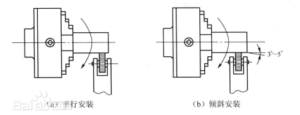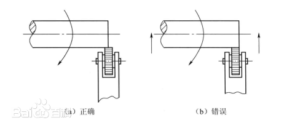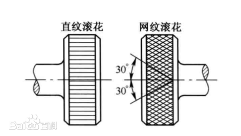how does a knurling tool work
The knurling process is often used in CNC machining, and in this article we will look at how knurling tools work and the different types of knurling tools available.
1. What is knurling?
Knurling is a mechanical process that involves pressing a pattern onto the surface of a workpiece. The pattern can be in the form of straight ridges or diamond-shaped ridges, with the main purpose being to provide better grip. Knurling can also be used for decorative purposes to enhance the aesthetics of the part.
2.Knurling method
Since the rollers roll the metal layer on the surface to be processed during the knurling process, causing certain plastic deformation to form patterns, the radial pressure generated during knurling is very large.
Before knurling, the knurled surface of the workpiece should be machined (0.8~1.6) m (modulus) according to the nature of the workpiece material and the size of the knurling pitch P.
The knurling cutter is clamped on the tool holder of the lathe, and the center of the knurling cutter is at the same height as the rotation center of the workpiece.

When rolling non-ferrous metals or workpieces with high knurling surface requirements, the roller surface of the knurling knife should be installed at an angle of 3° to 5° to the left relative to the surface of the workpiece, so that it is easy to cut in and less likely to produce random lines.
3,Precautions for rolling
(1) When starting rolling, you must use greater pressure to carve deeper patterns on the workpiece, otherwise random patterns will easily occur.
(2) In order to reduce the radial pressure at the beginning of rolling, 1/2~1/3 of the width of the roller surface can be in contact with the workpiece, as shown in Figure 7. In this way, the knurling knife can be easily pressed into the surface of the workpiece. After the vehicle is stopped and inspected, and the knurling meets the requirements of the workpiece, the knurling knife can be motorized longitudinally. Repeat this process for 1 to 3 times until the pattern becomes prominent.

(3) When knurling, the cutting speed should be lowered, generally 5~10m/min. Choose a larger longitudinal feed amount, generally 0.3~0.6mm/r.
(4) When knurling, cutting oil needs to be poured to lubricate the roller, and the cutting produced by the rolling wheel must be cut out frequently.
4. Types of knurling tools

There are several types of knurling tools available, each designed for specific applications and patterns. Some common types of knurling tools include:
– Straight knurling tools: These tools have straight teeth that produce linear knurling patterns. They are often used to create better grip on cylindrical surfaces.
– Diamond Knurling Tools: These tools have diamond-shaped teeth that create a diagonal knurling pattern. They are often used for decorative purposes or to improve grip on flat surfaces.
– Knurling Tools: These tools have specially shaped teeth that create unique knurling patterns. They are used to create custom designs on workpieces.
In summary, knurling tools are essential for creating textured patterns on workpieces for improved grip or aesthetics. By understanding how knurling tools work and considering various factors, manufacturers can produce high-quality knurled parts for a variety of applications. There are many types of knurling tools, and choosing the right tool and parameters is critical to achieving the desired knurling pattern. With the proper techniques and tools, knurling can be a versatile and effective process for enhancing part functionality and appearance.

Leave a Reply
Want to join the discussion?Feel free to contribute!